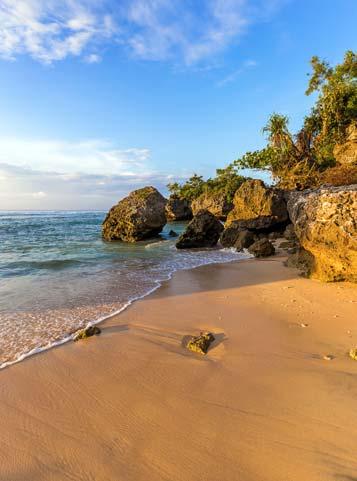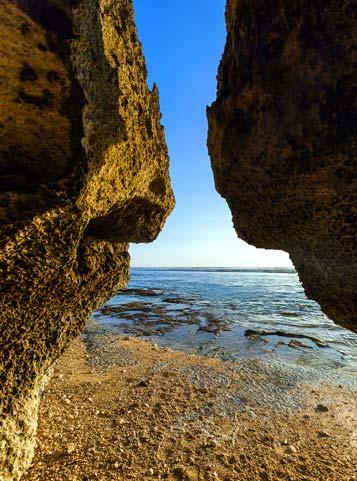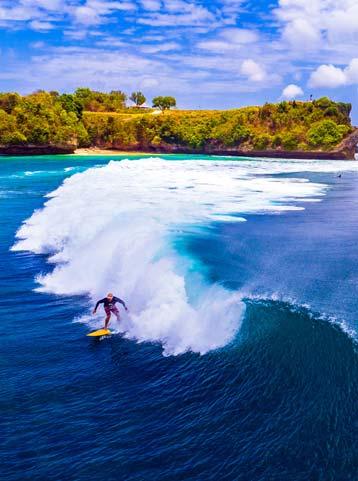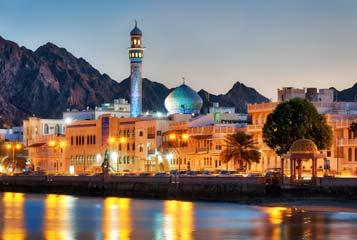
9 minute read
Las Vegas 12 Bali
Bali is filled with remote beaches and paradises alike that all offer something unique in their own right. Southern Bali is particularly blessed with these wonders, however, due to their exclusive nature they can become hard to find without intimate knowledge of the island. Here are five of these hidden wonders.
Balangan Beach
Advertisement
Balangan beach is one of many surfer delights near Uluwatu and is only a kilometre away from Finns Beach Club. Located west from Garuda Wisnu Kencan Natural Park, this beach is among the few in southern Bali that boasts golden sand and clear water. Balangan is a rustic natural beach with many limestone cliffs and a long reef, to boot. Take note of the tide schedule before heading there as it becomes difficult to swim during high tide while during low tide the water is extremely shallow. In any case, swimmers must be wary of the rocks as they are slippery.
Due to its hidden nature, Balangan doesn’t see too much action making it a perfect spot for couples to get away. Visitors can also take in the immense view from atop the cliff, a spot which offers unique photo opportunities.
Suluban Beach
Suluban beach, also known as Blue Point, is an ideal spot to spend a day exploring with family and friends. To get to the beach itself, visitors must navigate their way through limestone caves. The caves alone make the drive to Pecatu worthwhile, however, the steps to go down are rather steep so be careful. After exiting the caves, you have two options. Turn right and keep navigating your way through caves and log ramps or turn right and relax under the cliff on one of Bali’s most exclusive beaches. While the water isn’t that clear, taking in the sunset at Suluban is a must. Suluban, like Balangan, mostly gets surf lovers and not much else, making it a truly intimate spot. Affordable drink and food options are available on sight.
Padang Padang
Padang Padang, the beach made famous by Julia Roberts in Eat Pray Love, is another must visit in southern Bali. However, over the years, Padang Padang has gained more notoriety and has even begun hosting international surf events making it the most crowded of the five options. Located on the north western coast of Bukit Peninsula near Bingin, this beach is a common favourite for people staying in Uluwatu. Its hundred meter stretch of white sands and clear blue waters make it all the more desirable for prospective visitors. Padang Padang is also one of the few beaches in Uluwatu which has a temple overlooking it, offering the possibility to take in exotic views. There are also shops, Western-style restaurants and surf lodges around for those in need of a momentary respite from the water.
Single Fin Beach
Single Fin beach is yet another one of Bali’s hidden spots and is located on the cliffs of Uluwatu below Blue Point hotel. This beach is arguably the easiest to find out of these remote paradises due to the fact that Made Kasim, Bali’s first professional surfer, paired with Tai Graham to create Single Fin Beach Club to go along with it. Boasting the biggest balcony in the archipelago, visitors can take in the view of the surrounding spiritual homes and the Indian Ocean, making it an ideal spot to chill around sunset. The beach itself is relatively calm while the beach club is an ideal place to grab a drink and a bite to eat. There is also a Single Fin surf shop, cafe and bar.
Dreamland
Dreamland is the fifth and final hidden beach in south Bali, located southwest of Bulkit. Its limestone cliffs, white sand and rugged coastline make for a wonderful combination and an overall breathtaking beach. Recently, they have also developed a golf course and resort nearby as part of the New Kuta project. While these exploits have made the beach more accessible, it still remains hidden. Dreamland’s reef breaks are arguably the nicest on the island and are well worth a few minutes of your time to take in. Chairs and a parasol on the deck will run you around 100,000 IDR or about $10. Negotiable, of course. The beach’s food options are rather limited but, there are many nearby spots that offer fresh fruit juice. Outside of surfing, the number one thing to do at Dreamland is take in the sunset.
https://bali.com


IIt seemed as we drove on a wide thoroughfare, edged by well-tended shrubs and trees, that we were travelling from town to town rather than traversing the city of Muscat, Oman’s capital. All along this boulevard and its roundabouts, covered with flowers and greenery, were eye-catching sculptures of artefacts from Omani history and life. It was truly an imperial avenue uniting a 40 km (25 mi) spread-out city - inviting in its historic and modern attractions.
Greater Muscat, with a population of some 600,000, in reality consists of three large towns: Muscat, Muttrah, Ruwi and their suburbs - all divided from each other by low hills.
At the southern end is located the old town of Muscat, a city with an illustrious past. Overpowered by its scenic ancient forts and beautiful mosques, it stands, as it has for centuries, the crown jewel of the Sultanate of Oman. Unlike almost all the other towns on the eastern Arabian shores, it does not have an artificial air, having been for centuries an important trading centre and an imperial capital.
Poised on lofty crags, guarding the mouth of its harbour are two recently renovated citadels. They were built by the Portuguese during their 16th - 17th centuries’ occupation of parts of Oman’s coast and expanded by the Omanis after these European invaders were expelled.
Overlooking the walled city, in the midst of which is located the flamboyant Sultan’s Palace, stands on one side the Mirani Fort and on the other the Jalali Fortress, housing a museum which needs a special permit to visit. One of the Sultan’s palace guards who was talking to us as we surveyed the forts, described them well when he remarked, “Are they not majestic these fortresses? You know, they are the symbol of our country.”
For us, it was exciting to explore and savour the city by foot while we reminisced about its history. After our tour of this immaculately clean compact town with its impressive structures, we stopped a while to photograph the Sultan’s Palace, seemingly a vision from the Arabian Nights, then left for Muttrah, 4 km (2.4 mi) away. Just before entering Muttrah, the Corniche and its surroundings, said to be one of the most beautiful spots in the Arabian Peninsula, we were struck with a fairytale aura. On the edge of Riyam Park, dominated by a gigantic white incense-burner, we stopped awhile to enjoy the view.
The burner-monument, a very impressive replica of an artefact which, for centuries, has been important in Omani life, soared above the coastal highway - a road seemingly overwhelmed by the huge colourful flower-urns dividing the lanes. Like us, first-time travellers always stop to admire the breathtaking natural scenery - greatly enhanced by the hand of man.
I was driving slowly savouring the panorama when my daughter tapped me on the shoulder, “Look at that fort! It looks like a storybook fortress.” I turned my head. Towering above us was the Portuguese Fort, dominating Muttrah’s port, which bristled with cargo ships, modern yachts and dhows (traditional Arab sailing ships) - all overshadowed by a huge passenger liner.
We parked our auto on the long sweeping Corniche, and then walked the seaside avenue, edged by plaques of fibreglass birds representing Oman’s wild-life. At the end of the Corniche, past a fish roundabout, we stopped to explore the fish souk (market). One side of the souk housed a fruit and vegetable section and on the other side was a very clean, well-stocked fresh fish market.
Crossing over to the other side of the Corniche, past men playing the ancient seashell game of hawalis, we walked back under the shadows of the many architecturally delightful old merchant houses, dating from the 19th century. A good number were being painted sparkling-white or a light beige tonethe sole colours allowed for the outside of buildings in Greater Muscat. The only exception for the use of other colours is for decoration. There is a governmental law that stipulates that structures must not look rundown. Hence, most of Muscat’s buildings always appear to glow in the sunlight.
At the Bank of Oman, we turned right and entered Muttrah’s souk - the most interesting traditional market in the Arab Gulf States. Its meandering alleyways, sprawling in all directions, are filled with tiny shops, stocking everything from stainless steel products to the handiwork of the Bedouins. Above all, frankincense and myrrh, traded in Oman since time immemorial, were on sale everywhere. It was as if we had walked back into history.
A cruise liner had stopped in Muscat for the day and its passengers saturated the souk. Bargaining was impossible. The passengers, with a few hours to spare, would pay whatever the merchants asked. My daughter noting the wide grin on the face of a shopkeeper whose shop was filled with these sea travellers, remarked, “He should smile! Look at the money he’s raking in from these gullible buyers.” It was apparent that in this venerable Arab trading port, as they have for centuries, the merchants were still plying their profitable trade. From Muscat we drove on the main motorway until we reached Ruwi - Greater Muscat’s commercial heart. Here and there along the thoroughfare, man-made specimens of Oman’s wildlife like ibex, oryx, and tahr, lurked- in the roadside vegetation, beautifying the sides of the road. Soon, we were driving on Ruwi Souk Street, where it is said ‘everything sold in Oman can be found’. Here, merchandise is sold at a lower price than what we paid after bargaining in Muttrah’s souk. Leaving Ruwi, we drove on to explore Qurum, Madinat Qaboos and other newly built sections of the city. It was a transformed world. Where a quarter century ago there were no paved roads, virtually no grass and shrubs or even water and electrical systems, greenery now covers the city landscape. Mile after mile of lush turf, trees and bright flowers beautify the city - already possessed with the natural beauty of beaches, mountains and sea. Thanks to fibreglass, amid all this man-made natural beauty, there are giant silver-painted pieces of Omani jewellery, coffee pots, chests overflowing with treasures, and much more decorating the sides of the avenues. Hence, it surprised no one when Muscat came first in the 1995 ‘Arab Cities Prize Organization Awards’, winning in the most beautiful city category. For the last night in this modern city of Sindbad, we went on an evening’s dhow ride in the Gulf of Oman. As we sailed along the coast, in the distance, the glowing lights of Muscat brought to my mind the city’s illustrious history. No doubt, Sindbad the Sailor gloried in its waters since it is said that he was born in Sohar a short distance away. If Sindbad could only see Muscat now, it past enhanced with a garland of superb modernity, he may well have put his travels on the back burner never wanting to leave the beauty of this city.

www.visitmusiccity.com




